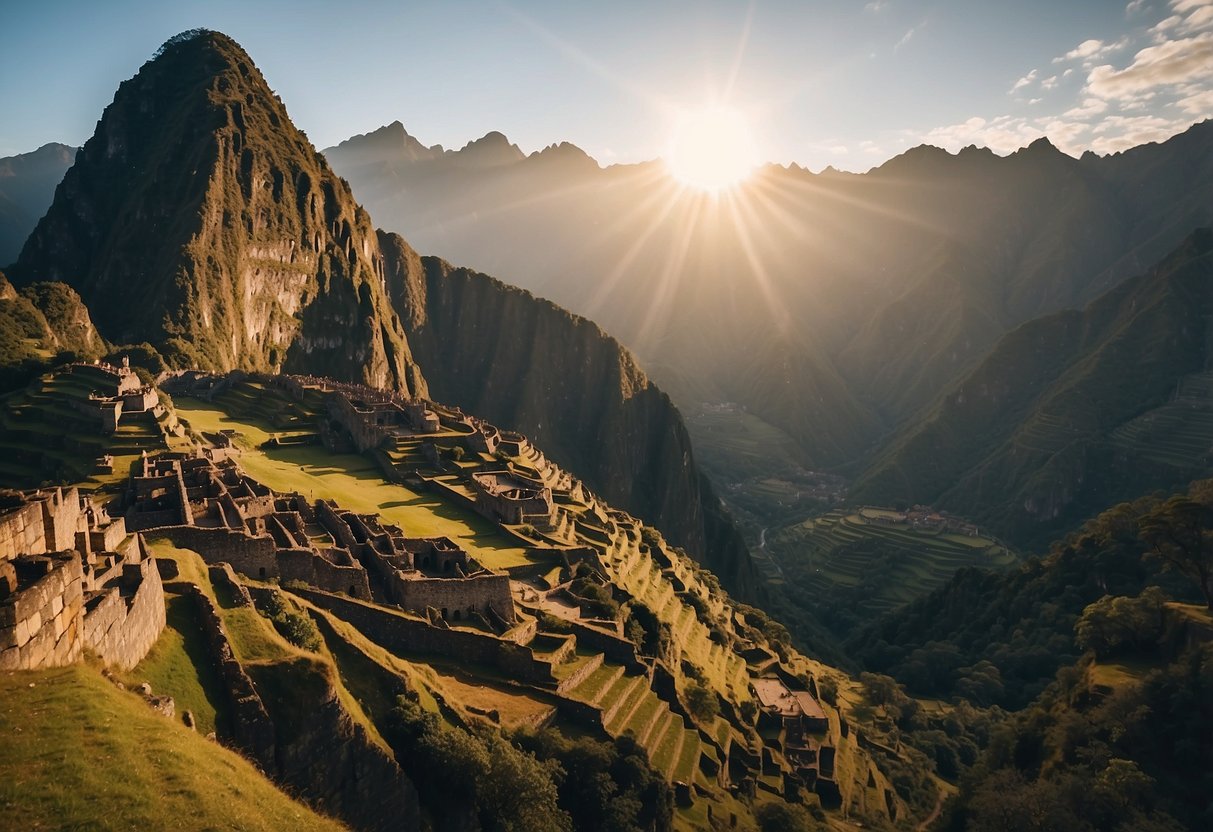
Preservation Efforts
Efforts to preserve Machu Picchu involve coordinated actions by UNESCO and the Peruvian government, as well as sustainable tourism initiatives.
UNESCO and the Peruvian Government
Recognized as a UNESCO World Heritage Site in 1983, Machu Picchu’s preservation falls under international and national priorities. UNESCO collaborates closely with the Peruvian government to maintain the site’s integrity against environmental and human threats.
The Peruvian government enforces regulations to control visitor numbers. They implement policies that prevent physical wear on ruins, curb erosion, and manage waste. Continuous monitoring and scientific research are integral to these efforts, ensuring that the site remains protected for future generations.
In addition, both entities engage local communities in preservation activities, fostering a sense of shared responsibility and pride.
Sustainable Tourism Initiatives
Promoting sustainable tourism is crucial to preserving Machu Picchu. Limiting daily visitor numbers minimizes environmental impact. Entry quotas based on timed ticketing help distribute the flow of tourists throughout the day, reducing congestion and wear on the site.
Training programs for guides emphasize the importance of conservation, educating visitors on respectful behavior and the significance of the ruins. Moreover, eco-friendly practices, such as waste reduction and recycling, are encouraged within tourism operations.
Local tourism businesses often receive support to adopt sustainable practices. This not only benefits the environment but also aids in maintaining the cultural essence of the region.
Cultural Heritage
Machu Picchu stands as a testament to the intricate relationship between the Inca civilization, their religious beliefs, and the surrounding natural landscape. The ruins reveal a harmonious blend of cultural practices and architectural ingenuity.
The Role of Religion and Rituals
Religion played a pivotal role in Inca life, and Machu Picchu was no exception. The Intihuatana, a ritual stone, is believed to have been used in astronomical observations and religious ceremonies. Scholars think it was designed to connect with celestial events, highlighting the importance of the sun in Inca spirituality.
The site includes several ceremonial complexes, where ritual ablutions and sacrifices were performed. These religious practices were intended to appease gods and ensure harmony with nature. Through these acts, the Incas sought to gain favor from sacred entities, emphasizing their deep spiritual connections.
Incas’ Integration with Nature
The Incas demonstrated a profound integration with nature through their architecture and agricultural practices. Terraces carved into the mountains allowed efficient farming and prevented landslides, showing an advanced understanding of their environment.
Buildings in Machu Picchu were constructed to align with astronomical phenomena. Temples and other structures were oriented to capture the sun’s rays on significant dates, such as the winter solstice, illustrating their reliance on and reverence for natural cycles.
Their stonework, blending seamlessly with the natural landscape, further exemplifies their respect for the surrounding environment. Emphasizing harmony with their surroundings, Machu Picchu reflects the Incas’ sophisticated and respectful interaction with nature.
Traveling to Machu Picchu
Reaching Machu Picchu involves careful planning, often starting from Cusco, moving through the Sacred Valley, and utilizing various modes of transport. The town of Aguas Calientes serves as the closest access point to the ancient ruins.
Modes of Transportation
Travelers typically begin their journey in Cusco, the gateway to the Sacred Valley. From Cusco, they might take a combination of trains and buses to get closer to Machu Picchu. The train ride from Ollantaytambo, situated in the Sacred Valley, offers scenic views and an array of services to cater to different budgets.
The most common trains are run by PeruRail and Inca Rail, both offering varying classes of service. Tickets should be purchased in advance, especially during peak season. Once travelers reach Aguas Calientes, buses or guided hikes lead them up to the entrance of the Machu Picchu ruins.
Aguas Calientes: The Gateway Town
Aguas Calientes, also known as Machu Picchu Pueblo, is the key access town for visiting the ruins. Nestled at the base of Machu Picchu, it is primarily accessible by train or a rigorous trek. The town serves as the departure point for buses that ascend the steep mountain paths to the ancient citadel.
Accommodations in Aguas Calientes range from budget hostels to luxury lodgings, offering visitors a place to acclimatize before their ascent. Various restaurants and shops provide essentials and dining options. Visitors can explore local attractions like the thermal baths to unwind before or after their visit to the ruins.